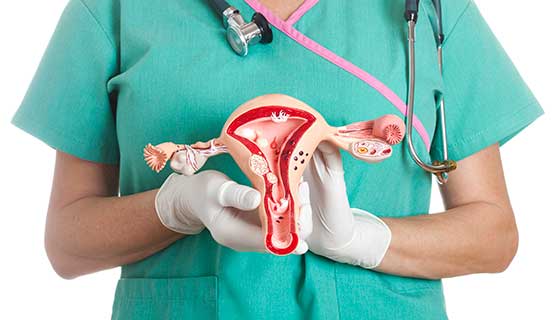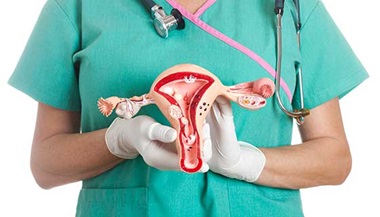Premenstrual Dysphoric Disorder (PMDD)
What is premenstrual dysphoric disorder (PMDD)?
Premenstrual dysphoric disorder (PMDD) is a much more severe form of premenstrual syndrome (PMS). It may affect people of childbearing age. It’s a severe and chronic health condition that needs attention and treatment. Lifestyle changes and sometimes medicines can help manage symptoms.
What causes PMDD?
The exact cause of PMDD is not known. It may be an abnormal reaction to normal hormone changes that happen with each menstrual cycle. The hormone changes can cause a serotonin deficiency. Serotonin is a substance found naturally in the brain and intestines that narrows blood vessels and can affect mood and cause physical symptoms.
Who is at risk for PMDD?
Anyone can develop PMDD, but the following people may be at an increased risk:
-
People with a family history of PMS or PMDD
-
People with a personal or family history of depression, postpartum depression, or other mood disorders
Other possible risk factors include lower education and cigarette smoking.
Talk with your healthcare provider for more information.
What are the symptoms of PMDD?
Symptoms of PMDD start during the week before menstruation and end within a few days after your period starts. These symptoms disrupt daily living tasks. Symptoms of PMDD are so severe that people have trouble functioning at home, at work, and in relationships during this time. This is markedly different than other times during the month.
The following are common symptoms of PMDD:
-
Depressed mood, sadness, hopelessness, or feelings of worthlessness
-
Increased anxiety, tension, or the feeling of being on edge all the time
-
Mood swings
-
Self-critical thoughts, increased sensitivity to rejection
-
Frequent or sudden tearfulness
-
Increased irritability, anger, or both
-
Conflict with family, coworkers, or friends
-
Decreased interest in normal activities
-
Concentration problems
-
Fatigue, lethargy, or lack of energy
-
Changes in appetite, such as binge eating, overeating, or craving certain foods
-
Changes in sleep pattern, such as excessive sleeping or difficulty sleeping
-
Feelings of being overwhelmed or out of control
-
Physical symptoms, such as breast swelling or tenderness, headaches, joint or muscle aches, weight gain, and bloating
The symptoms of PMDD may look like other health conditions, such as a thyroid condition, depression, or an anxiety disorder. Always see a healthcare provider for a diagnosis.
How is PMDD diagnosed?
Aside from a health history and physical and pelvic exam, there are very few diagnostic tests. Because you may have mental health symptoms, your healthcare provider may want you to be evaluated for mental health concerns. Your provider may also ask that you keep a journal or diary of your symptoms for several months. In general, to diagnose PMDD the following criteria must be met:
-
Over the course of a year, during most menstrual cycles, you must have 5 or more symptoms (see above) that have been present during the week before your period and stopping within a few days after your period starts.
-
Symptoms must be linked to significant distress. Or they must disturb your ability to function in social, work, or other situations.
-
Symptoms are not related to or made worse by another health condition.
How is PMDD treated?
PMDD is a serious, long-term (chronic) condition that does need treatment. Several of the following treatment approaches may help ease or decrease the severity of PMDD symptoms:
-
Changes in diet to increase protein and carbohydrates and decrease sugar, salt, caffeine, and alcohol
-
Regular exercise
-
Stress management, such as relaxation and meditation methods
-
Vitamin supplements, such as vitamin B-6, calcium, and magnesium
-
Anti-inflammatory medicines
-
Selective serotonin reuptake inhibitors
-
Birth control pills
For some people, the severity of symptoms increases over time and lasts until menopause. For this reason, a person may need treatment for an extended time. Medicine dosage may change throughout the course of treatment.
Key points about PMDD
-
PMDD is a much more severe form of premenstrual syndrome (PMS).
-
The exact cause of PMDD is not known.
-
PMDD is different from other mood disorders or menstrual conditions because of when symptoms start and how long they last.
-
Symptoms of PMDD are so severe that it affects your ability to function at home, work and in relationships.
-
Treatment that may include lifestyle changes and sometimes medicines.
Next steps
Tips to help you get the most from a visit to your healthcare provider:
-
Know the reason for your visit and what you want to happen.
-
Before your visit, write down questions you want answered.
-
Bring someone with you to help you ask questions and remember what your provider tells you.
-
At the visit, write down the name of a new diagnosis, and any new medicines, treatments, or tests. Also write down any new instructions your provider gives you.
-
Know why a new medicine or treatment is prescribed, and how it will help you. Also know what the side effects are.
-
Ask if your condition can be treated in other ways.
-
Know why a test or procedure is recommended and what the results could mean.
-
Know what to expect if you do not take the medicine or have the test or procedure.
-
If you have a follow-up appointment, write down the date, time, and purpose for that visit.
-
Know how you can contact your healthcare provider if you have questions, especially after office hours or on weekends and holidays.






